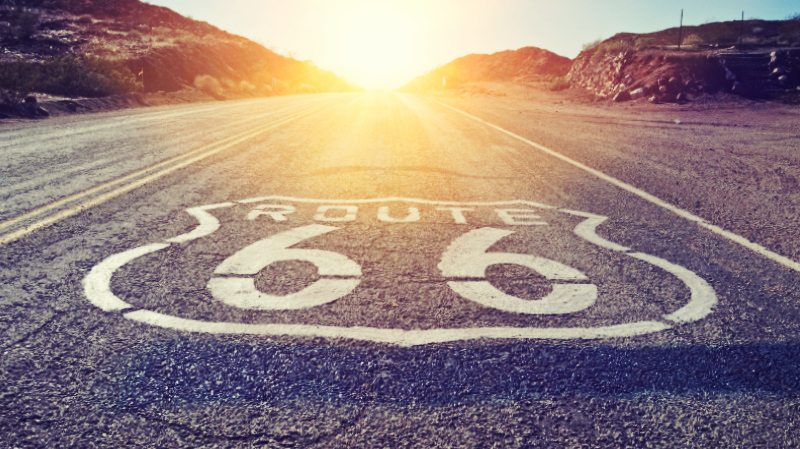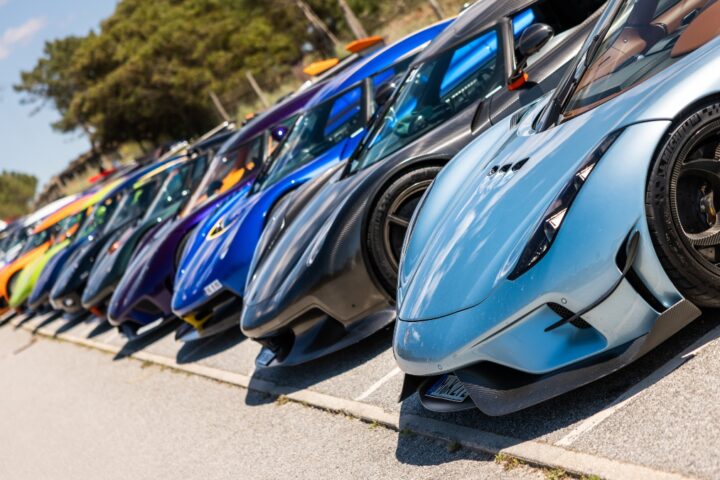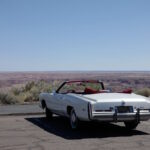The road trip holds a special place in the American consciousness; every trip has a story of triumph, heartbreak, interesting strangers, and stranger locals. There is nothing like a Route 66 road trip that encapsulates the spirit of America; it represents a new beginning, hope, and freedom. Back when connecting major cities was done by two lanes of blacktop, small towns flourished across the USA and those towns have stories to tell.
Along roads like Route 66, the Lincoln Highway, and the Pacific Coast Highway, entrepreneurs created roadside oddities hoping to entice drivers to stop. Before the drive-thru, we had Valentine Diners, where road trippers of old would stop and have a bite to eat and stretch. Instead of Instagram people had Instamatic cameras to capture memories from the road. Since 1920, the American Highway has been the embodiment of freedom; that longing for discovery (and sometimes a business trip) prompted me to pack up the car and head down the highway, seeking to experience a bit of that freedom for myself.
Route 66 Road Trip
My travels take me to cities like Denver, San Francisco, New York, Dallas, Billings, Santa Fe, New Orleans, and countless others each year. Driving is my preferred mode of transportation, it allows me to explore, take the backroads, and disconnect a little bit. While there are many historic roads in America, no other captures the imagination and the American Spirit quite like a Route 66 Road Trip. It is the road that many families have stories about, it’s the road brought my Grandparents west to California and the road that moved to Texas, it’s been immortalized in songs, film, and books for decades and is known globally as “the Mother Road.”
My trip would take me from Los Angeles to Chicago and I would be taking as much of old Route 66 as I could. The first stretch across the Southwest means jumping on and off the interstate. Much of the classic architecture and roadside attractions along Route 66 are hidden in Southern California, the Aztec Hotel in Monrovia is still there and you can still get a steak at the Sycamore Inn in Rancho Cucamonga, but many of the builds are a lost to modernity. Until you get to the high desert heading towards Barstow on the I15, it still follows Route 66 for the most part, there are several sections that divert, taking you back in time through small desert towns like Oro Grande.
Oro Grande is an unincorporated town, home to a small school, a community church, a pizza place called “Cross-Eyed Cow” and a magical place called Elmer’s Bottle Tree Ranch. Elmer’s is one of those roadside attractions that couldn’t be built today and you would never find if you stayed on the highway. A maze of metal trees with colorful glass bottles for leaves intermixed with found objects and folk art. The old road goes all the way up to Barstow, following along the banks of the mostly dry Mojave River and the route of the Santa Fe railway, it is a much more scenic drive than the interstate. If you have time, stop by the Route 66 Mother Road Museum, which is housed in a historic Harvey House and shares space with the Western American Railroad Museum.
From here for a portion, I40 takes over from Route 66 for a few miles, but for the most of the way in California I40 parallel, save for one small detour through Amboy. As you get closer to the Arizona border the cities stop for a bit, and remnants of towns that today are little more than truck stops are all you see. Most of the drive is like this, small towns, now bypassed by the interstate. There is a flash of civilization at the border where the Colorado River attracts thousands of tourists each year, the only reprieve from the endless desert, but soon the lights of Needles fade and if you take 66 towards Peach Springs all you find are more of those small towns that time forgot. Each has their local claim to fame, mostly kitschy roadside attractions they hope you’ll stop to see, in Holbrook it’s the Wigwam Motel; in Gallup, it’s the El Rancho Inn. With every turn, you discover another historic marker some official and others erected by entrepreneurs, but it is this vintage Americana that really makes the trip worthwhile.
When driving down Route 66 I think about that spirit of adventure this road gave to so many people over the years, the hope they felt as they were traveling west to start a new life like my Grandfather did when he left his small town in New Mexico, with my Grandmother and newborn uncle. As you drive through all of these dying towns you can’t help but think about the dreams that were crushed as the world sped up and the interstate passed them by. Not that progress is a bad thing, but taking a trip like this does make you reflect on the virtues of slowing down, taking a long way home, shopping from mom & pop stores, and eating at a family-owned restaurant.
Making my way through Arizona, Williams is perhaps one of my favorite places to stop, the historic downtown is well-preserved and well-trafficked thanks to the tourists that flock to the Grand Canyon each year. If you are hungry, I suggest Rod’s Steak House, a Williams institution, that has been serving travelers since 1946 and not much has changed since they opened. From the classic neon sign to the steer-shaped menus that haven’t changed since the day they opened, it is like stepping back in time. Many Route 66 travelers take the time to spend a day at the Grand Canyon, but this trip I am just pushing through, past Flagstaff, Winona, only to stop to see a friend’s project in Winslow. The 66 Motor Palace is a unique place to stop, shop, and maybe even hear a live performance, Brian and his wife Lori opened the shop as a way to celebrate all the things they love about Route 66, vintage motorcycles, music, and made in the USA products. As I cruise by people are lined up to take their photo “on a corner in Winslow Arizona,” but it is early and the shop isn’t open yet.
As I cross over into New Mexico I always try to stop at the El Rancho, if I am not staying overnight I always try to have lunch or dinner. This trip I would just be stopping for lunch. I order a Desi Arnaz at the café and read about the stars of the silver screen that once graced the hotel, but now grace the names of dishes on the hotel’s laminated menu. The El Rancho opened in 1937 and was built by the brother of famed film director D.W. Griffith as a base for movie productions. Jane Wyman, Kirk Douglas, John Wayne, Spencer Tracy, Katharine Hepburn, and even Ronald Regan all stayed at the El Rancho while filming from the 40s-60s. The walls are covered with movie memorabilia covering the walls and rooms straight out of a 40’s western, it is a special place to stay if you have the chance.
Back in the car, past forgotten trading posts that now have casinos named after them, in Albuquerque, I head north up I25 towards Santa Fe, one of my favorite cities in the world. I plan to stop in and visit a few friends, stay the night, perhaps visit Santa Fe vintage and Canyon Road before pushing on. This part of 66 has been completely bypassed by the highway since 1937, originally the 1926 route went from Albuquerque up to Santa Fe, then through the mountains to before coming back down and reconnecting to where the modern interstate is today. As you head east out of Tucumcari 66 parallels the interstate all the way through the Texas panhandle.




























